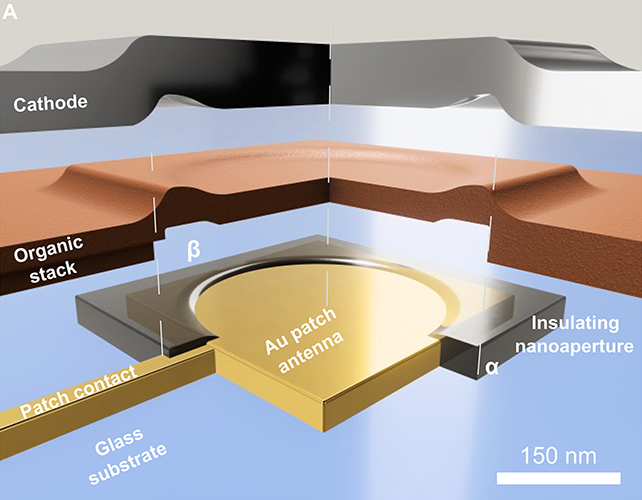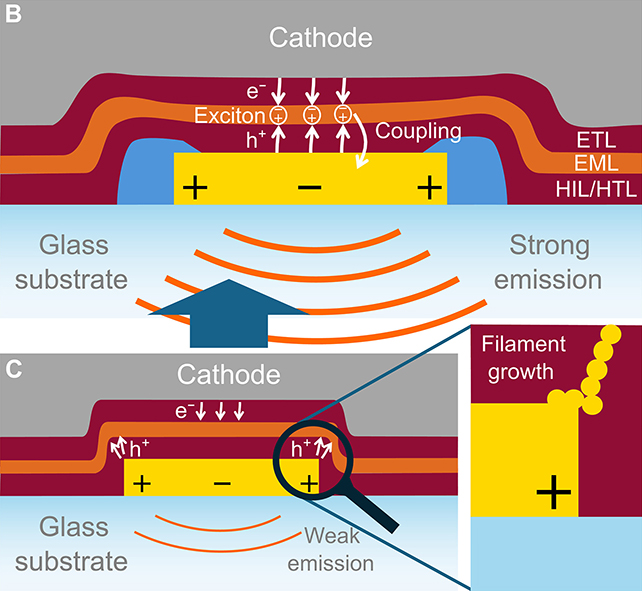Get ready for a new era of miniature displays. Scientists have developed the tiniest pixel ever made – just 300 × 300 nanometers – and it's bright enough to rival today's standard pixels.
The work of researchers from the University of Würzburg in Germany opens new possibilities for displays inside virtual reality (VR) headsets and augmented reality (AR) smart glasses.
At 250 times smaller than the width of a human hair, their new pixel could be used in a 1920 x 1080 (full HD) resolution screen that fits into a square millimeter – tiny enough to tuck into a lens and put information into your line of sight as you wander around the world.
Related: There's a Simple Solution to Protect Your Eyes From Screens
The nano-pixel achieves brightness on par with pixels in modern OLED (organic light-emitting diode) screens, which are roughly 16-17 times bigger, suggesting you don't have to trade clarity for luminance when shrinking things down.
The team's innovations include a sandwich of two electrodes, one of which is made of gold and also functions as an antenna. Together, they deliver the electrical current and help to boost and direct the emitted light – which typically can't escape at such a small pixel size.

"With the help of a metallic contact that allows current injection into an organic light-emitting diode while simultaneously amplifying and emitting the generated light, we have created a pixel for orange light on an area measuring just 300 by 300 nanometers," says experimental physicist Bert Hecht.
"This pixel is just as bright as a conventional OLED pixel with normal dimensions of 5 by 5 micrometers."
What has tended to limit previous efforts to make super-small pixels is that simply miniaturizing the current design doesn't work. The sharp edges of the electrodes cause electric field disruptions, interfering with the light display and eventually killing the pixel.
Here, as well as using the lower electrode as an antenna – partly by switching the material to gold – the edges were also covered with an insulating layer. This forces the current through the center of the pixel.
"As with a lightning rod, simply reducing the size of the established OLED concept would cause the currents to emit mainly from the corners of the antenna," says experimental physicist Jens Pflaum.
"The resulting electric fields would generate such strong forces that the gold atoms becoming mobile would gradually grow into the optically active material."

There are still challenges to tackle with the technology. The researchers are now looking at ways to cover the full color spectrum and improve the efficiency of the pixels, for example. It currently only emits orange light, and the efficiency is still relatively low in the 1 percent range.
However, there's lots of promise in the pixels: They match the brightness of existing OLED pixels, they're stable and relatively simple to manufacture, and they're responsive enough to be used in gadget displays.
"Our results highlight a scalable strategy to overcome key electronic and optical bottlenecks of nanoscale optoelectronic devices," writes the team in their paper.
The research has been published in Science Advances.
